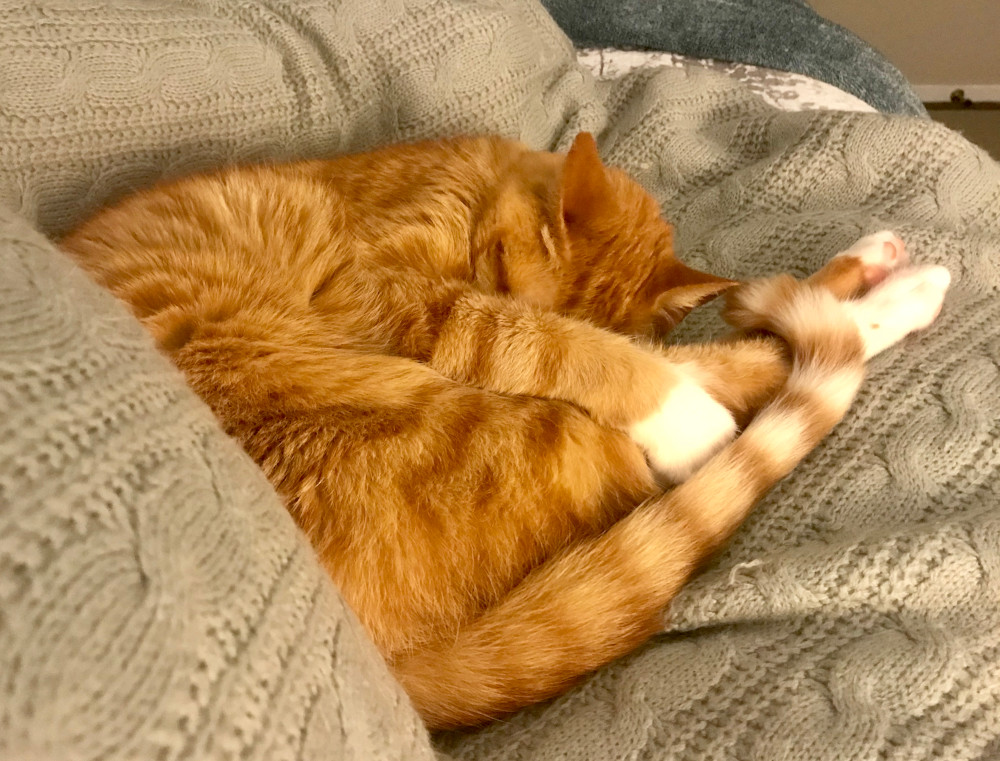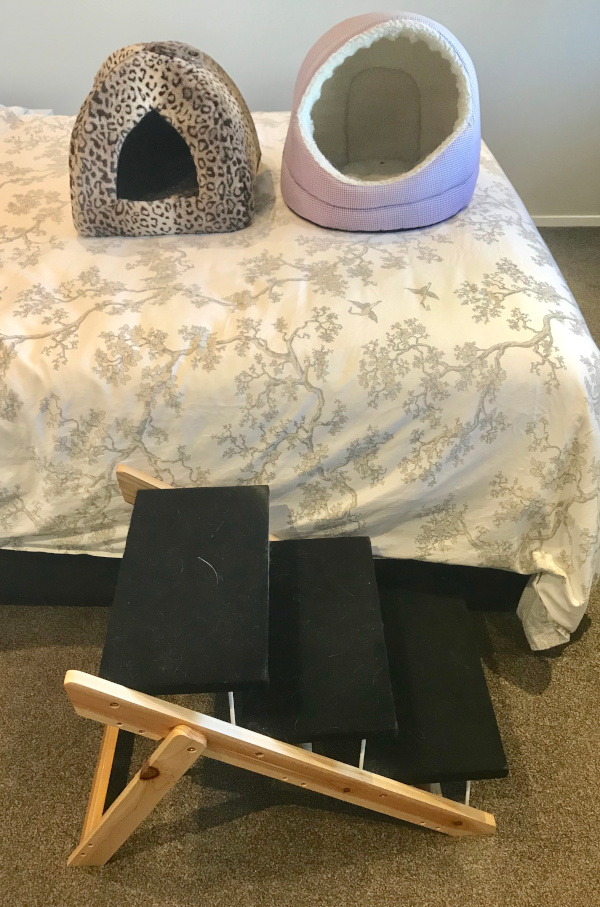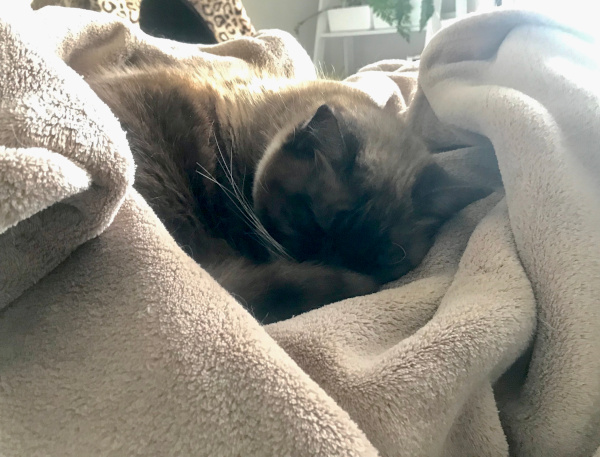
Arthritis (also known as osteoarthritis or degenerative joint disease) is a common and serious animal health and welfare problem in cats [1–3]. It can significantly affect their quality of life.
Signs of arthritis
Signs that indicate your cat could have arthritis include:
- reduced activity
- reduced interaction with people and other cats/animals
- reluctance to walk or play
- stiffness
- difficulty getting up
- limping / lameness (harder to spot if it’s in more than one leg)
- difficulty climbing stairs or jumping up or down onto beds/sofas etc.
- reduced use of certain areas of the house (e.g., fewer high areas are accessed)
- reduced grooming
- twitching, moving, growling, or vocalising in pain when touched in a painful area
- personality/temperament change (for example, may seem lethargic or depressed)
- difficulty using the litter tray
- inappropriate elimination (often because accessing the litter tray is difficult or painful).
If you think your cat might have arthritis, make an appointment with your veterinarian to ensure a proper diagnosis as other conditions can mimic this condition.
For more information about recognising and monitoring pain in your cat, see this article.
Risk factors for arthritis
Advancing age is the main risk factor for arthritis in cats although genetics, breed, conformation (e.g., body shape and leg size), and injuries can also influence the development of arthritis [2, 4–7]
Arthritis management
Arthritis is painful, and the longer that pain goes untreated, the worse it becomes. Cats with arthritis must see a veterinarian and receive effective and evidence-based treatment.
Treatment and management of osteoarthritis differs between individual cats, as the most appropriate course of action depends on various factors such as their age, level of fitness, weight, and other health conditions they might have. Individual cats may also respond differently to the different treatments available, and some cats may not be able to tolerate some medicines. Therefore, a veterinary assessment and discussion about the best options is very important.
Treatment options include anti-inflammatories, drugs to treat chronic pain, agents that minimise cartilage breakdown, and emerging therapies [8–12]. Your veterinarian will be able to help you decide on the best treatment options for your individual cat.
Note that there are many ‘joint supplements’ on the market but many of these lack robust evidence to support their use, and they should not be used as a substitute for evidence-based treatments. For more information see your veterinarian.
In addition, there are things that you can do to help your cat at home, including:
- Make or buy a cat staircase or ramp to make it easier for your cat to get up onto places where they like to go (such as the bed or sofa) (see image below for example).

- Provide soft and well-padded comfortable beds that are easily accessible, and in peaceful and draft-free places. Igloo beds are often very popular with older cats.

- Have everything your cat needs on the same level (food, water, litter tray, beds, hiding places etc.), so that they don’t need to go up or downstairs if they don’t want to.
- Make it easy for your cat to pass through the cat flap if you have one; you may need to tie or prop it open so that they don’t need to push out or get hit by the closing door.
- Ensure their litter trays are easy to get into (it can help to make a low entry side for them to get into the tray without having to step over a high side).
- Help your cat with grooming and cleaning (as they can find this difficult) and check their claws and trim them regularly (old cats often get overgrown claws).
- Keep your cat’s weight under control, as extra weight can make the condition worse.
References
[1] Lascelles BDX, Henry JB, Brown J, et al (2010) Cross-Sectional Study of the Prevalence of Radiographic Degenerative Joint Disease in Domesticated Cats. Veterinary Surgery 39:535–544
[2] Slingerland LI, Hazewinkel HAW, Meij BP, Picavet P, Voorhout G (2011) Cross-sectional study of the prevalence and clinical features of osteoarthritis in 100 cats. Veterinary Journal 187:304–309
[3] Lascelles BDX, Dong YH, Marcellin-Little DJ, Thomson A, Wheeler S, Correa M (2012) Relationship of orthopedic examination, goniometric measurements, and radiographic signs of degenerative joint disease in cats. BMC Vet Res. https://doi.org/10.1186/1746-6148-8-10
[4] Lascelles DB, Robertson SA (2010) DJD-Associated Pain in Cats. J Feline Med Surg 12:200–212
[5] Loder RT, Todhunter RJ (2018) Demographics of hip dysplasia in the Maine Coon cat. J Feline Med Surg 20:302–307
[6] Gunn-Moore D, Bessant C, Malik R (2008) Breed-related disorders of cats. Journal of Small Animal Practice 49:167–168
[7] Bennett D, Zainal Ariffin SM, Johnston P (2012) Osteoarthritis in the cat: 1. How common is it and how easy to recognise? J Feline Med Surg 14:65–75
[8] Bennett D, Zainal Ariffin SM, Johnston P (2012) Osteoarthritis in the cat: 2. How should it be managed and treated? J Feline Med Surg 14:76–84
[9] Gruen ME, Myers JAE, Tena JKS, Becskei C, Cleaver DM, Lascelles BDX (2021) Frunevetmab, a felinized anti-nerve growth factor monoclonal antibody, for the treatment of pain from osteoarthritis in cats. J Vet Intern Med 35:2752–2762
[10] Guedes AGP, Meadows JM, Pyendop BH, Johnson EG, Zaffarano B (2018) Assessment of the effects of gabapentin on activity levels and owner-perceived mobility impairment and quality of life in osteoarthritic geriatric cats. J Am Vet Med Assoc 253:579–585
[11] Shipley H, Flynn K, Tucker L, Wendt-Hornickle E, Baldo C, Almeida D, Allweiler S, Guedes A (2021) Owner evaluation of quality of life and mobility in osteoarthritic cats treated with amantadine or placebo. J Feline Med Surg 23:568–574
[12] Gowan RA, Baral RM, Lingard AE, Catt MJ, Stansen W, Johnston L, Malik R (2012) A retrospective analysis of the effects of meloxicam on the longevity of aged cats with and without overt chronic kidney disease. J Feline Med Surg 14:876–881
